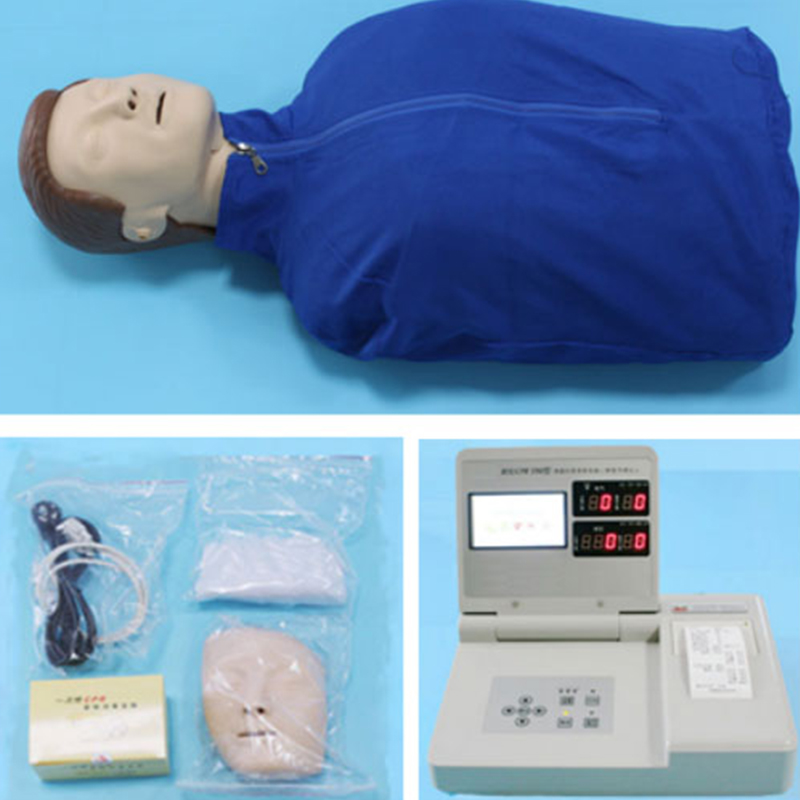Welcome to visitShanghai Chinon medical Model & Equipment Manufacturing Co., LTD
Cardiopulmonary resuscitation (CPR) is an emergency treatment measure used to maintain blood supply to the brain and other vital organs in the event of cardiac arrest to gain time to save life. When performing cardiopulmonary resuscitation, compression is a very critical step, and its standard is directly related to the effect of resuscitation. The compression standards for CPR will be explained in detail below.
First of all, the pressing part should be accurate. Usually, the rescuer should place the heel of one hand close to the center of the patient's chest at the level of the line connecting the two nipples (the lower half of the sternum). This position is exactly where the heart is, ensuring that the force acts directly on the heart when pressing, thus promoting blood circulation.
Secondly, the pressing method should be correct. The rescuer needs to clasp the fingers of both hands, overlap the base of the palms, raise the palms, straighten the upper limbs, lean the upper body forward, and use the strength of the upper body to press down vertically. This ensures that the force is evenly and stably applied to the patient's chest and avoids unnecessary shaking. At the same time, the rescuer's arms should be at a 90-degree angle to the patient's chest to ensure the correct direction of compressions.
The depth and frequency of compressions are also important criteria for cardiopulmonary resuscitation. For adults, the depth of compression should be between 5 and 6 cm. This depth ensures sufficient pressure on the heart and promotes blood flow without causing damage to the sternum and ribs. For children and infants, because their chests are smaller, the depth of compression should be appropriately reduced to about 1/3 of the front-to-back diameter of the chest, that is, about 5 cm for children and 4 cm for infants.
As for the frequency of compressions, it is generally 100 to 120 times per minute. This frequency can maintain sufficient blood flow without placing excessive physical burden on the rescuer. It should be noted that the faster the compression speed, the better. Compressions that are too fast may result in insufficient compression depth, thus affecting the resuscitation effect.
In addition, cardiopulmonary resuscitation also includes two steps: opening the airway and artificial respiration. While performing compressions, the rescuer needs to check and clean the patient's mouth to ensure that the airway is clear. Then, perform artificial respiration through mouth to mouth or mouth to nose. Each blow should last about 1 second, and the chest should rise when blowing. Usually, after every 30 chest compressions, 2 artificial respirations should be performed to form a complete cycle.
Throughout the CPR process, the rescuer needs to remain calm and move quickly but orderly. At the same time, attention should be paid to observing the patient's reaction. After every 5 cycles (ie, 150 compressions and 10 artificial respirations), the patient's breathing and pulse should be evaluated to determine whether the resuscitation is effective.
Finally, it needs to be emphasized that cardiopulmonary resuscitation is an emergency treatment measure, and its effectiveness is affected by many factors. Therefore, when performing cardiopulmonary resuscitation, you should try to follow the guidance of professionals and send the patient to the hospital for further treatment as soon as conditions permit.
To sum up, the compression standard of cardiopulmonary resuscitation is one of the key factors to ensure the effectiveness of resuscitation. Mastering the correct compression method, location, depth and frequency is of great significance to improving the success rate of resuscitation. At the same time, we should also be aware of the complexity and professionalism of cardiopulmonary resuscitation, and constantly learn and improve our first aid skills so that we can provide correct and effective treatment in emergencies.

|
NEXTпјҡFemale Pelvis and Pelvic Floor Muscle Model: An Essential Tool in WomenвҖҷs Health
LASTпјҡAdvanced male catheterization model, a new benchmark for medical training |
Return list |